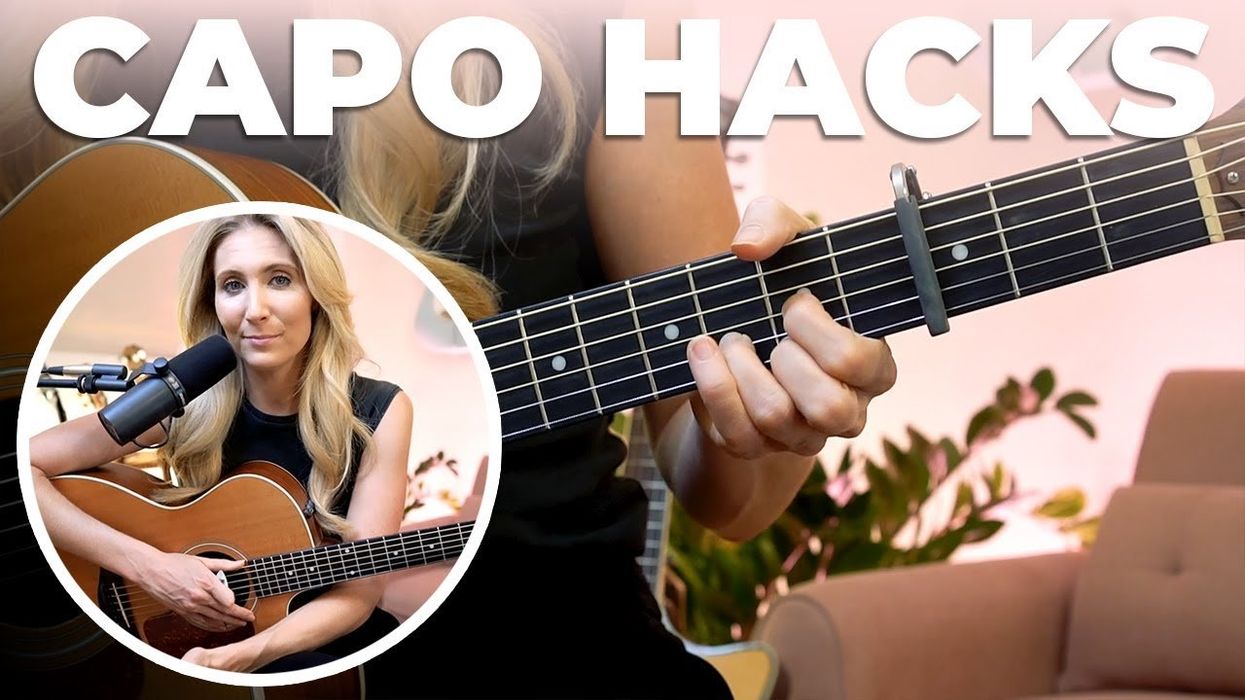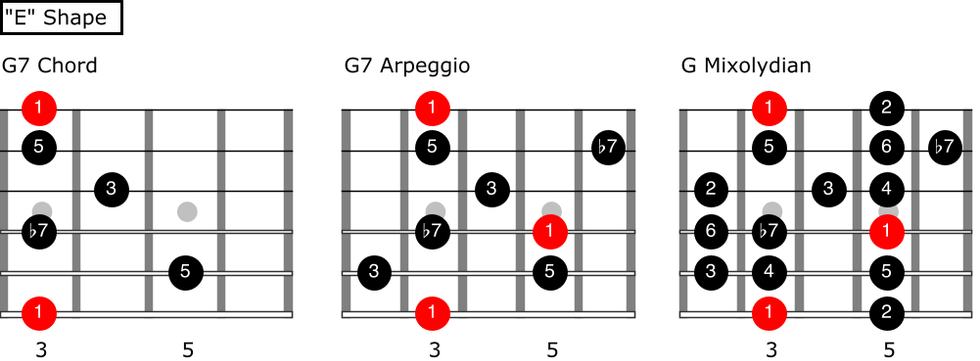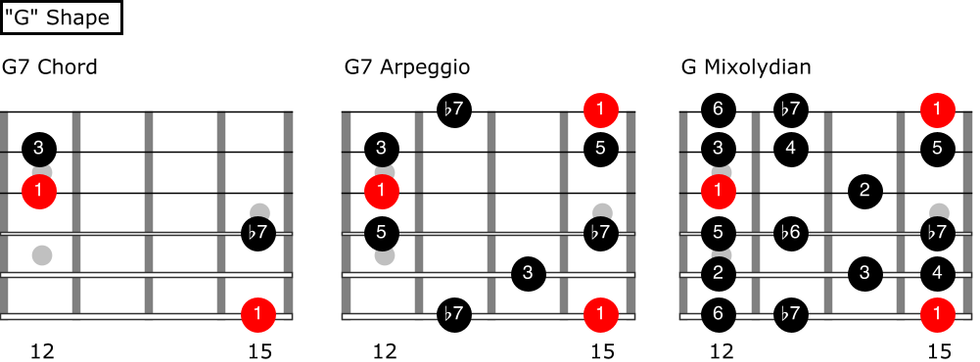Scaffolding is a teaching technique used to build connections for learners before the true concept is taught. An educator will select content that is not too difficult or unfamiliar for students and will use that familiar material to make connections to the new concept.
An example of scaffolding is a teacher discussing the themes of To Kill A Mockingbird before assigning a class to read the book itself. The CAGED system shares this same structure; instead of directly learning how chords are constructed, students learn chord shapes they’re already familiar with, but move the chord shapes to new locations on the neck.
There are advantages and disadvantages to learning with a scaffolding system.
Advantages:
- Scaffolding minimizes frustration
- Scaffolding is catered to students who are quick to give up
- Building connections based on known concepts (i.e.: chord shapes) speeds up learning
Disadvantages:
- Does not promote independent learning
- Over-scaffolding creates dependence
- CAGED system cannot be applied to music in general and is specific only to the guitar.
The ultimate goal of CAGED is not to teach shapes but to teach new chords.
I would like to offer another piece of scaffolding. Chord inversions will also teach students new ways to approach chords they already know. These two scaffoldings are not in competition, but in fact aid each other.
You will create a chord progression applying both the CAGED system and chord inversions. We will use the I–VIm–IV–V progression in the key of A major: A–F#m–D–E.
What's a Chord Inversion?
An inversion occurs when a chord’s notes are rearranged, specifically which note in the bass of the chord.
An A major chord in root position is A (root) C# (3rd) E (5th)
1st inversion is C# (3rd) E (5th) A (root)
2nd inversion is E (5th) A (root) C# (3rd)
In Ex. 1 you can see these inversions played on the top three strings.

Let’s simultaneously lay out the A major chords using the CAGED system in Ex. 2. (If you need a CAGED refresher, check out "The Guitarist's Guide to the CAGED System."
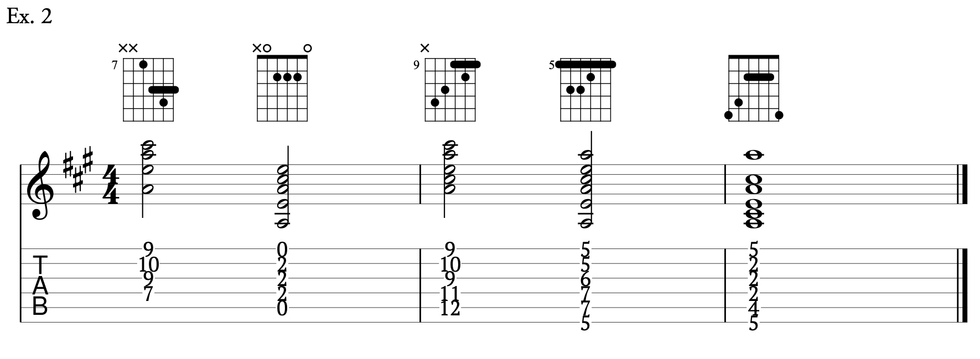
You will select one of these voicings for your chord progression. As you examine all eight voicings, pay attention to which voicing you’re drawn to. This will help build your creative voice. Personally, I’ve always loved the sound of a 1st inversion chord, so I will select that for the first chord in my progression.
The second chord in our progression is an F#m. Let’s examine the inversions for this chord in Ex. 3.
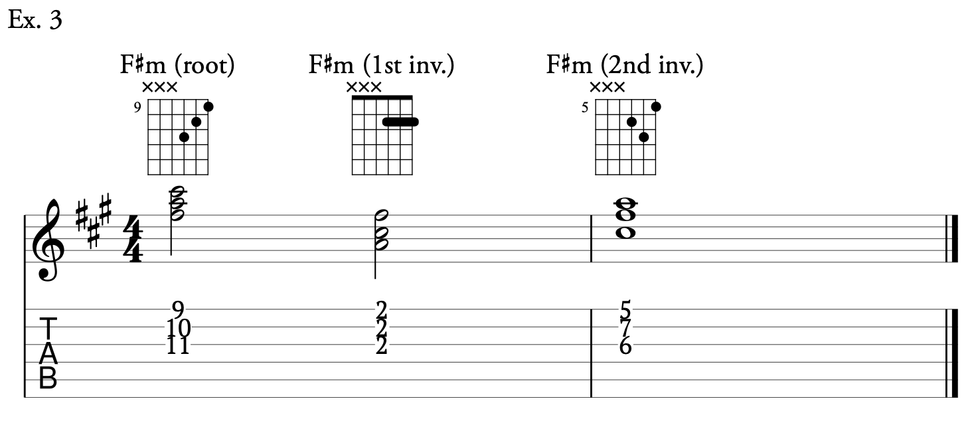
In Ex. 4 you can see the F#m CAGED system chords.
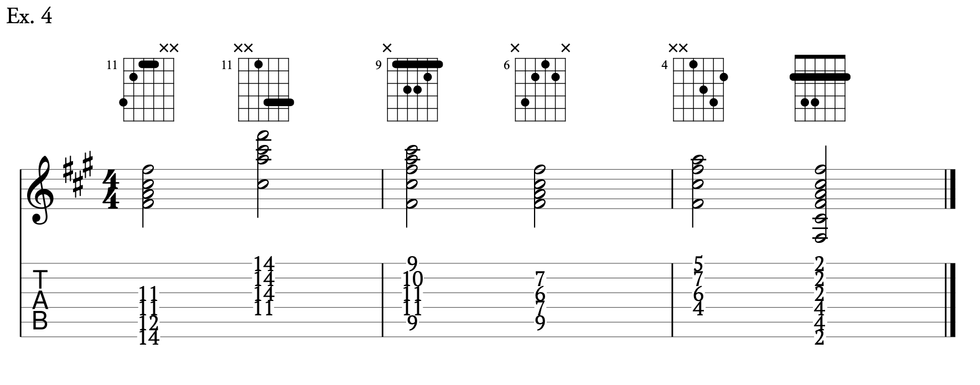
I want to include some descending pitches. I will select the F#m from the CAGED system, using the "E" shape. When moving between these two voicings the energy drops in a lovely way because there are so many descending pitches. We also add three new low notes, giving this voicing a deeper sonic space. This is a sound I enjoy. You may choose whichever voicings you think sound right for your exercise.
For my example, I’m going to select a D chord in root position. Curiously, I decided against using the "A" shape of the D chord. These two chords are incredibly similar but I wanted to stay away from the lower notes. This will add contrast in my progression for a dynamic effect.
Because E major is the final chord in our progression, I’d like to hear it end on a full sound with a nice bottom end. This will contrast the high voicing of the previous chord. For these reasons I simply choose the open E chord. The final result of my progression is in Ex. 5.
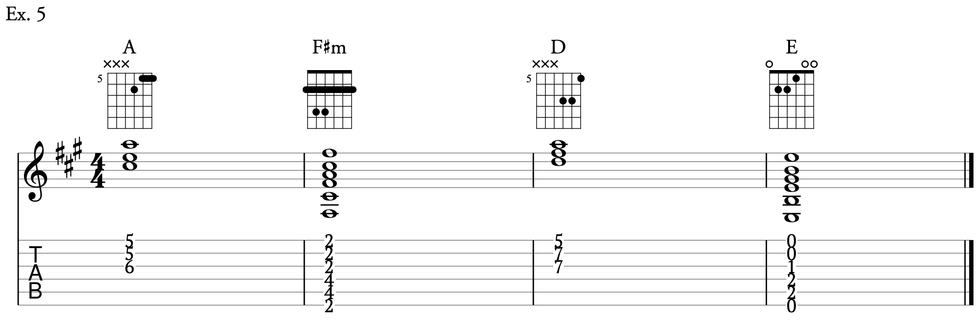
Scaffolding is not good or bad, just as the CAGED system is not good or bad. The power in this lesson comes from the student making strong creative choices, and analyzing why they’re making those choices.
Create your own chord progression and think critically as you select which chords you want. The system itself doesn’t give a player creativity. It’s the implementation of the system that builds creativity.

